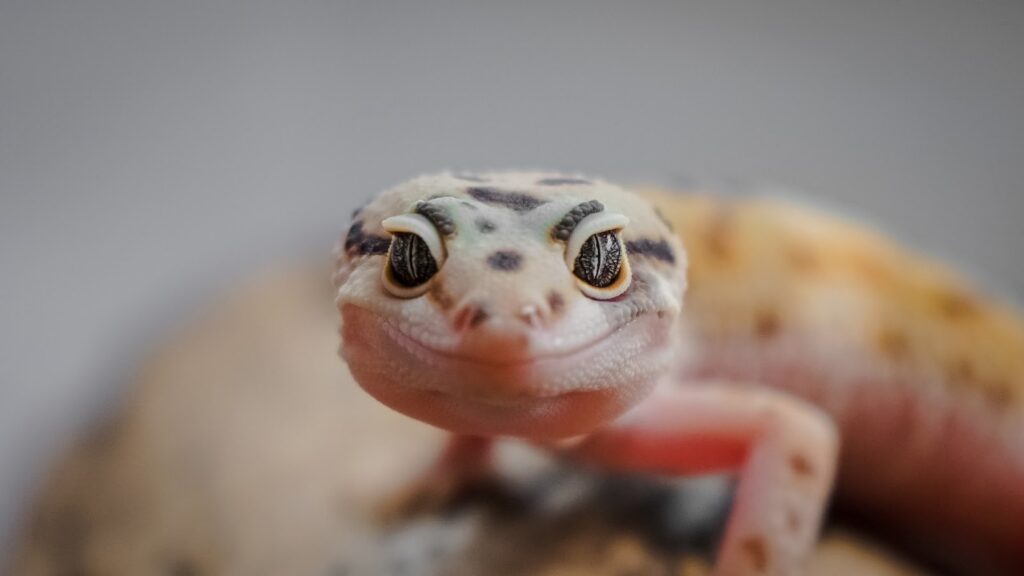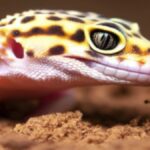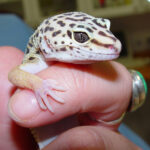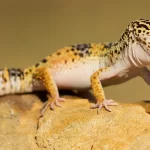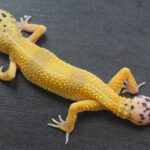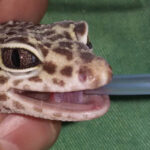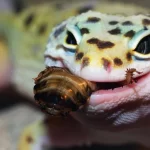Silkworms, also called ‘silkies’, are the larval (or caterpillar) stages of the Mulberry silkmoth (Bombyx mori). They are generally cultured privately on a small-scale or commercially on farms for their ability to produce silk. With their high protein and relatively low-fat content, silkworms are considered to be amongst the best insect foods for Leopard geckos.
Although their natural life cycle is seasonal, silkworms are easy and relative cheap to keep and culture. Other than food items for Leopard geckos and other reptiles, silkworms are popularly cultured on large scale for their ability to produce silk.
In some countries, silkworms are readily available from specialised pet shops and online retailers (Buy live silkworms from Amazon.com). Silkworms are quiet, slow-moving, fairly odourless, need little maintenance and relatively small amounts of space.
Silkworm nutritional values*
Silkworms offer great value as food for Leopard geckos. When looking at their nutritional composition, they are high in protein, vitamines, calcium and other minerals and low in fat:
* Values are averages calculated from sources. Expressed as %DM except moisture.
When comparing silkworms with other crawling food such as mealworms (T. molitor), they have similar amounts of protein (ca. 59% (5) (17) vs. 54% (1) (2) (4) (5) (6) (8) (9) (14) ), less fat (ca. 17% (5) (17) vs. 30% (1) (2) (5) (6) (7) (8) (9) (14) ), more usable calcium (Ca:P ratio of about 1:2 (13) vs. 1:14 (5) (6) (8) (9) (11) (14) (18) ) and are just as tasty. When compared to crickets (A. domestica), silkworms have similar protein levels (ca. 64% (3) (5) (6) (8) vs. 59% (5) (17) ), less available calcium (ca. 1:5 (6) (8) (18) vs. 1:2 (13) ) and similar amounts of fat (21% (3) (5) (6) (8) vs. 17% (5) (17) ).
Silkworm sizes
- Hatchling / first instar 3 mm
- Second instar 9 – 19 mm / 3/8 – 3/4 ” (small silkworms)
- Third Instar 19 – 31 mm / 3/4 – 1 1/4 ” (medium silkworms)
- Fourth instar 31- 44 mm / 1 1/4 – 1 7/8 ” (large silkworms)
- Fifth instar 50 – 75 mm / 2 – 3 ” (x-large silkworms)
- Moth has a wingspan of 40 – 50 mm / 1.5 – 2 “
Feeding silkworms to Leopard geckos
When available, silkworms can be fed to any size and age Leopard gecko. They are considered palatable (tasty) and are readily accepted by Leopard geckos and other insectivorous reptiles (making them a great choice for picky eaters too). Silkworms have soft bodies that make them easy and safe to swallow and digest. Because of their high protein and available calcium levels, they are popularly fed to gravid female and growing Leopard geckos.
Silkworm life cycle
Silkworms hatch from eggs produced by Mulberry silkmoths. After hatching, a silkworm will grow through several larval stages before pupating and emerging as a silkmoth again.
Newly hatched silkworm larvae are very tiny and will eat for anything between 12 and 56 days, consuming large amounts of mulberry leaves. The time it takes a silkworm to grow is dependant on the environmental temperature and the availability of food. Colder temperatures will prolong this period and vice versa. During their growth period, they will molt four times. The times between their moltings are called instars. The larvae of all four these stages (collectively called silkworms), can be fed to Leopard geckos.
After the last moulting and being about 50 to 75 mm / 2 to 3 “, the silkworm will stop eating and spin a cocoon from its own silk. Metamorphosis (changing into a moth) will take two to three weeks to complete. Moths that emerges from the cocoon will not eat at all. Their only goal is to find a moth of the opposite sex, breed and lay eggs again. A female silkmoth can lay anything from 200 to 500 eggs. Silkmoths are generally not fed to Leopard geckos.

